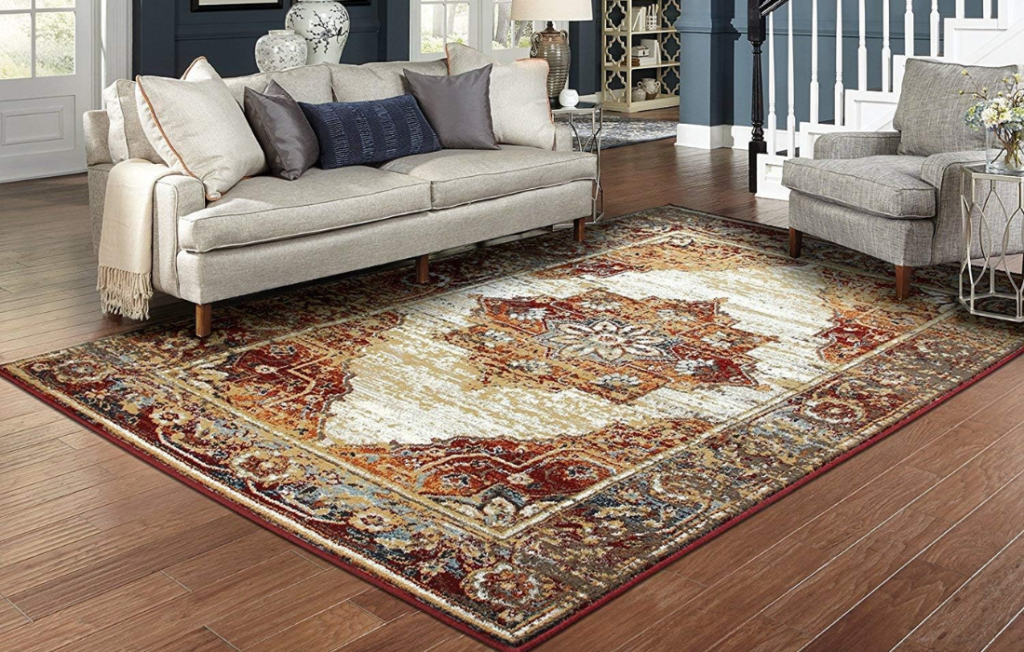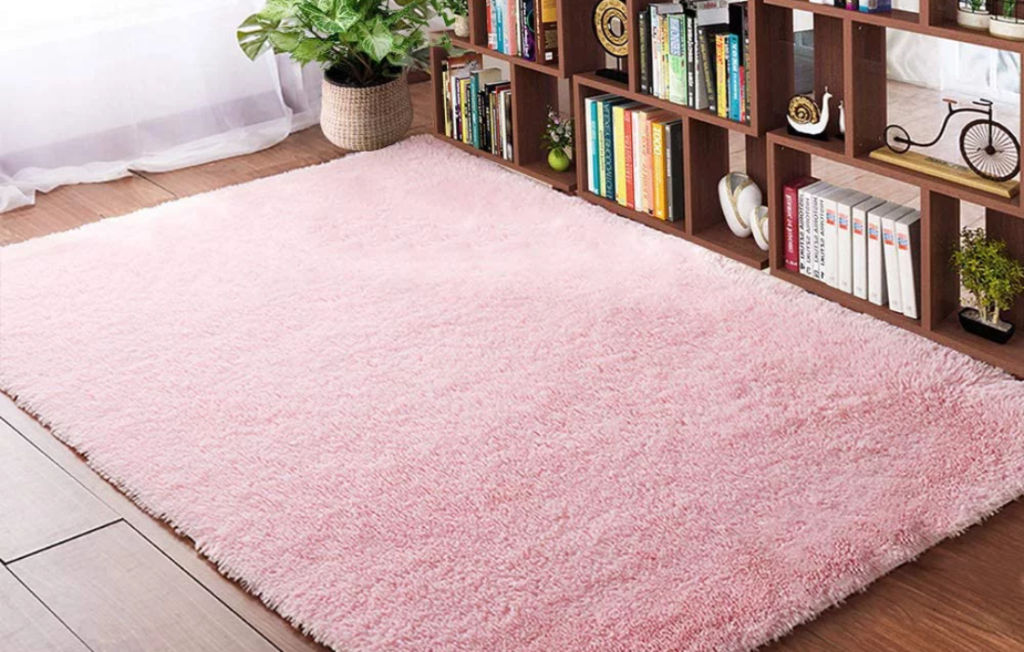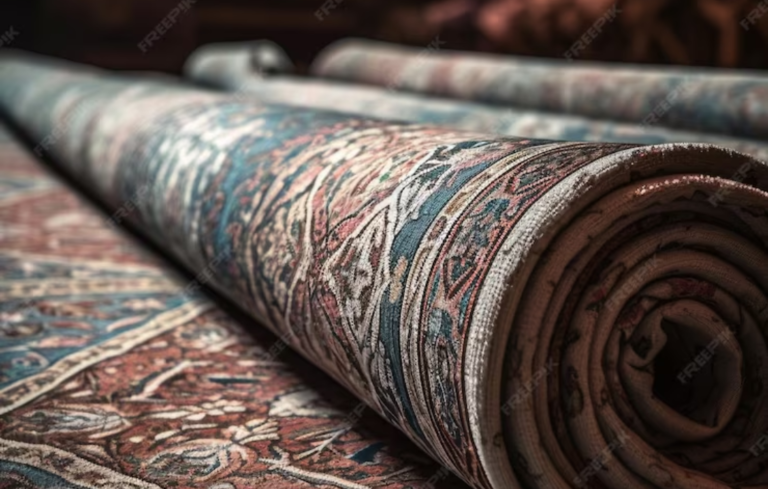Carpets and Rugs is your gateway to transforming living spaces into stunning showcases of personality and taste. Dive into the intricate weave of textures, patterns, and colors that define our curated collection, designed to cater to diverse preferences. From classic elegance to contemporary chic, we unravel the secrets of choosing the perfect carpet or rug for your home. Elevate your interior aesthetics with our expert advice on carpets and rugs, making every step a luxurious delight.
Table of Contents
Difference between carpet and rugs:
| FEATURES | CARPET | RUGS |
| Size Matters | Carpets: Typically cover the entire floor space of a room, providing a unified look. | Smaller and more versatile, they’re perfect for defining specific areas within a room. |
| Placement Flexibility | Installed wall-to-wall or fixed to the floor, creating a seamless, integrated appearance. | Freestanding and easily movable, offering flexibility in placement and design. |
| Purposeful Design | Primarily chosen for insulation and noise reduction, contributing to a cozy and quiet environment. | Add aesthetic appeal and character to spaces, serving as decorative elements while delineating different zones. |
| Diverse Styles and Sizes | Limited by room dimensions and layout, with customization options often restricted. | Embrace a wide range of styles, shapes, and sizes, allowing for greater personalization and creative expression. |
| Maintenance Considerations | Professional cleaning may be required due to their fixed nature. | Easily removable, facilitating convenient cleaning and rotation for a refreshed look. |
| Portability | Generally stationary and not easily portable. | Easy to move and relocate, enabling effortless changes to the room layout. |
| Budget-Friendly Options | Often more expensive, given their larger size and installation complexity. | Generally more affordable per square foot, making them a budget-friendly choice. |
| Customization and Uniqueness | Limited options for customization, as they are tailored to fit specific room dimensions. | Allow for greater personalization, contributing to a unique and individualized interior aesthetic. |
“Decoding Carpet and Rugs Prices: What Influences the Cost?”

Fiber Types and Material Composition
The first and foremost factor impacting the price of carpet and rugs is the type of fiber used in their construction. Natural fibers like wool tend to be more expensive than synthetic alternatives such as nylon or polyester. Wool, known for its durability and luxurious feel, often comes with a higher price tag, reflecting its quality and longevity.
“Wool: The Epitome of Luxury”
Wool carpets are prized for their natural beauty, softness, and resilience. The fibers are sourced from sheep, making them a renewable and Eco-friendly choice. While wool carpets may cost more upfront, their longevity and ability to resist stains and crushing make them a worthwhile investment for those seeking premium quality.
“Synthetic Fibers: Affordable and Practical”
Synthetic fibers like nylon and polyester offer a more budget-friendly option without compromising too much on performance. These materials are known for their stain resistance, durability, and wide range of color options. They are an excellent choice for high-traffic areas where practicality is key.
Carpet Construction and Pile Height
The way a carpet is constructed significantly affects its price. Carpets with intricate patterns, multiple layers, and high pile height often come at a higher cost due to the complexity of manufacturing. Pile height, referring to the length of the carpet fibers, can also influence the price, with longer piles typically being more expensive.
“Tufted vs. Woven: Unraveling Construction Methods”
Tufted carpets, created by punching yarn through a backing fabric, are a more cost-effective option compared to woven carpets, which involve interlacing the yarn in a more intricate pattern. While tufted carpets are generally more affordable, woven carpets are prized for their durability and detailed designs.
“Pile Height Matters”
Carpets with a higher pile height tend to be more luxurious and softer underfoot, but they also come with a higher price. Shorter pile carpets are often more practical for high-traffic areas and are generally more budget-friendly.
Carpet Density and Weight
The density of a carpet, determined by the amount of yarn used per square inch, plays a crucial role in its durability and comfort. Heavier carpets with higher density often come with a higher price but offer better resistance to wear and tear.
“Deciphering Density for Durability”
Carpets with higher density can withstand heavy foot traffic and resist matting and crushing. Consider the density rating when choosing a carpet for areas with high usage, such as living rooms or hallways.
“Weighty Matters: Measuring Quality in Ounces”
Carpet weight is another indicator of quality. Carpets are often measured in ounces per square yard, with heavier carpets generally being more durable. However, it’s essential to strike a balance between weight and other factors, as overly heavy carpets may be challenging to clean and maintain.
“In-Store vs. Online Shopping: Pros and Cons Unveiled”
Online shopping :
Carpet shopping link from amazon
Rugs shopping link of from amazon
Explore the Seamless World of Carpet and Rug Online Shopping. Elevate your home aesthetics with just a click as we guide you through the intricacies of selecting the perfect floor masterpiece from the comfort of your space. Uncover a tapestry of choices, unravel exclusive designs, and embark on a personalized journey to adorn your living spaces with warmth and style. Discover the convenience, variety, and expert insights that redefine the way you shop for carpets and rugs online.
In-Store Shopping Experience
In-store shopping provides a tactile experience, allowing customers to feel and touch the carpets before making a decision. The personalized assistance of sales professionals can also guide buyers through the selection process.
“Tactile Connection: Feeling the Texture In-Person”
One of the primary advantages of in-store shopping is the ability to physically experience the texture and quality of the carpet. Feeling the fibers and assessing the color in person can help buyers make more informed choices.
“Expert Guidance: The Role of Sales Professionals”
Sales professionals in brick-and-mortar stores are equipped with knowledge about different carpet types, construction methods, and quality indicators. Their expertise can be invaluable in finding the perfect carpet for your specific needs.

Conclusion:
whether you opt for the expansive coverage of carpets or the versatile charm of rugs, understanding these differences will guide you in making informed decisions that align with your design preferences and lifestyle needs.
FAQ’s:
What factors should I consider when determining the right carpet or rug for my space?
When choosing a carpet or rug, consider factors such as the fiber type, construction method, density, and weight. Assess your budget, the level of foot traffic in the area, and the desired aesthetic. Additionally, take note of any quality certifications to ensure the product meets industry standards.
Are wool carpets worth the investment, or should I opt for synthetic alternatives?
Wool carpets are known for their luxurious feel, durability, and stain resistance. While they may come with a higher upfront cost, their longevity often makes them a worthwhile investment. Synthetic alternatives like nylon or polyester are more budget-friendly and practical for high-traffic areas.
How do I decode carpet density and weight, and how do they impact the carpet’s performance?
Carpet density, measured by the amount of yarn per square inch, and weight, measured in ounces per square yard, are crucial indicators of a carpet’s durability. Higher density and weight generally translate to better performance and longevity. However, it’s essential to strike a balance to ensure ease of maintenance.
What role do certifications like C R I Green Label and Wool mark play in carpet quality?
Certifications such as C R I Green Label indicate low emissions of volatile organic compounds (V O Cs), contributing to better indoor air quality. The Wool mark certification ensures the use of high-quality wool and adherence to strict manufacturing standards. These certifications act as a stamp of approval for environmentally conscious and premium-quality products.
Is online shopping a viable option for purchasing carpets and rugs, or should I visit a physical store?
The choice between online and in-store shopping depends on personal preferences and needs. In-store shopping allows for a tactile experience, personalized guidance from sales professionals, and the ability to see and feel the carpets in person. On the other hand, online shopping provides convenience, a wide variety of options, and the ability to compare prices and read reviews for a more informed decision-making process. Consider your priorities, whether they lean towards a hands-on experience or the convenience of virtual browsing.




1 Comment
Pingback: Healthy Cooking with Air Fryers